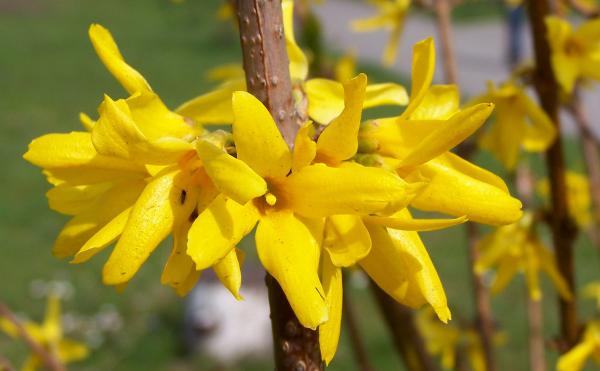Pay Attention
What a difference a year makes across most of the US this Spring. Last year two-thirds of the continental US had already set at least three to as many five daily high temperature records. Some had even made their second app of annual bluegrass seedhead suppression. Obviously management by the calendar is not way to operate-we must pay attention if want precision.
Growing degree days (GDD) as a measure of heat accumulation is an easy way to add precision to your management. In simple terms, establishing a "base-temperature" when biological activity commences, often 50F or 32F (0C), then monitoring the average temperature. Subtracting the average temperature from the base temperature provides a measure of biological activity. These numbers accumulate and over the last few years we are experiencing 15 to 20 percent more heat than normal (10 year average).
It's not like plants see the sun in the morning, turn to their desktop calendar and think, "Oh, it's April 15th, I better send out this tiller today." Or if an insect, "Ah, March 22nd, time to emerge from leaf litter and begin my trek to the fairway." Rather they respond to heat that partially drives their development and could provide insight into improving our management precision.
We use this strategy for pests with some success, mostly because we lack a concerted effort by our research community to study this more closely for other aspects of management. This type of research or "modeling" can be tedious and often requires regional and national validation to be adopted. But there is another way to use this data. Why can't we use it to apply all our foliarly active compounds? Why does everything seem to work on 7, 14 or 21 day intervals?

Bill Kreuser, a Ph.D. candidate here at Cornell and former MS student at UW-Madison under Professor Doug Soldat, developed a growing degree day model for reapplication of Trinexepac (Primo). Bill's approach was based on the degradation of Primo in the plant that was identified by Professor Bruce Branham at University of Illinois. Applying Primo every 200 base 0C growing degree days maintains growth suppression and helps minimize the "rebound" effect observed with many PGR's.
Why can't we use this approach for all our pesticide and fertilizer applications? We know half-lives of these products from the manufacturer, or nutrient release patterns from fertilizer companies. We also can match this data with pest pressure from predictive models for disease and insects.
Who decided that the 7 and 21 day interval is the best strategy-or is it just because it is easier?
The golf turf industry needs to be utilizing technology to monitor biological activity. Growing degree days, predictive models, or phenological indicators such as plant bloom should all be factored into our decision-making. When you are making applications don't just note the date, note the amount of GDD and the amount of heat accumulated between the applications.
The crazy weather can be made sense of if we "normalize" it based on temperature. If biological organisms and specifically our turf plants respond to heat why are we applying on a calendar? We better pay attention.



0 Comments
Recommended Comments
There are no comments to display.